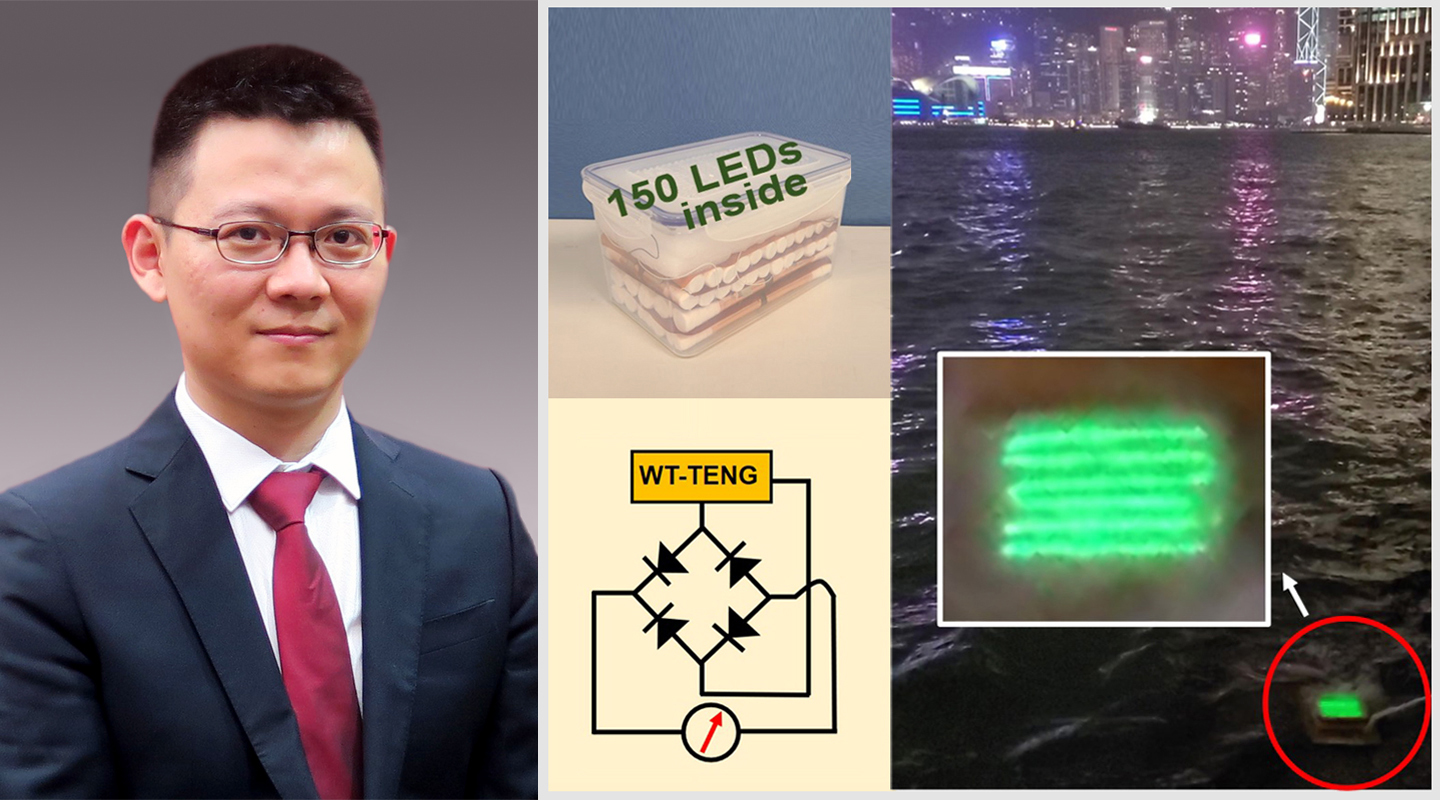Dear readers, With the launch of e-newsletter CUHK in Focus, CUHKUPDates has retired and this site will no longer be updated. To stay abreast of the University’s latest news, please go to https://focus.cuhk.edu.hk. Thank you.
Harnessing the Blue Energy
Engineering team develops triboelectric nanogenerator for harvesting ocean wave energy

A research team from the Faculty of Engineering has recently developed a water-tube-based triboelectric nanogenerator that can efficiently convert various irregular and low-frequency mechanical energies, including ocean wave energy, into electricity, providing a new avenue for the development of ‘blue energy’.
Researchers nowadays have been exploring different approaches for harnessing ocean energy to solve world energy crisis and pollution problems caused by thermal power generation. One such method is the usage of triboelectric nanogenerator (TENG), which makes use of triboelectric effect and electrostatic induction to harvest mechanical energy based on contact or sliding electrification.
This approach, nevertheless, comes with three problems: firstly, conventional TENG device is often based on solid/solid contact, and it is hard to ensure the contact intimacy of the two tribo-materials. Secondly, the material surfaces will wear or become damaged after long-term friction. Thirdly, the solid/solid-based TENGs need shell structures or mechanical components such as springs, holders, and rotors to harvest random vibration energy. The complex structure will reduce the efficiency of energy harvesting.
Prof. Zi Yunlong of the Department of Mechanical and Automation Engineering and his team have overcome the above technical limitations and developed a water-tube-based TENG (WT-TENG) for irregular and low-frequency environmental energy harvesting.
Taking advantage of the flexibility of water, the WT-TENG can be operated in various modes, including rotation, swing, seesaw, and horizontal linear modes, to harvest energy from diverse mechanical movements in the environment, such as ocean waves, wind, body and vehicle movements.
In addition, similar to toy building bricks, multiple small WT-TENG units can be easily combined and integrated as one larger unit and realize multiplied electric outputs. Researchers have designed two power generation units: one is a box with 34 WT-TENG units which was placed in the sea to collect ocean wave energy, whereas the other one a wristband composed of 10 WT-TENG units. The peak power generations of the two tests were both enough to drive 150 LED light bulbs.
‘Previous designs of ocean energy harvesters have been equipped with electromagnetic-based generators which are large in size and heavy, and will only generate power if the frequency of ocean waves reaches a certain high level,’ Professor Zi stated. ‘Our latest research has overcome the technical hurdles and will promote the use of nanogenerators, especially in “blue energy” harvesting, offering a new direction for the development of renewable energy to achieve carbon neutrality.’
Related research results were recently published in the internationally renowned journal Advanced Energy Materials.